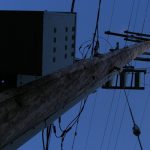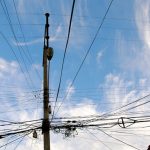Importance of Distribution Circuit Coverings for Wildfire Protection

Image courtesy of desert-dweller under Attribution-NonCommercial 2.0 Generic License, resized to 700 x 391 pixels.
The threat of wildfires on utility infrastructure has never been as great as it is right now, especially for utilities located on the western side of the country. One potential mitigation tactic is the use of distribution circuit coverings. If you work for a utility in a fire-prone area, this tactic is something to consider.
How Distribution Circuit Coverings Protect Against Wildfires
The installation of distribution circuit coverings is something that any electric utility in a fire-prone area should be considering. To put it simply, overall fire activity is probably not going to decline any time soon – in fact, it will likely increase. As an example, according to NOAA, there were 6 wildfires in 2023 that caused at least $1 billion in damage. And, according to the U.S. Dept. of Agriculture, a 1-degree Celsius increase (1.8 degrees F) in average temperature could result in a 600% increase in scorched forest areas in certain locations.
One way to help mitigate this growing threat is to cover primary and secondary distribution circuits, augmented by a cable circuit design incorporating a messenger with a spacer that does not arc, to reduce the risk of ignition. One such system is the AerialGuard System Solution developed by American Wire Group (AWG). The AWG solution encompasses a thermoplastic or thermoset covering solution designed for distribution wires rated at 15 kV, 25 kV, and 35 kV.
This type of solution mitigates the impact of falling tree limbs or other objects that may come into contact with a wire. It can also dampen the impact of windy conditions in non-forest areas. Obviously, to achieve an optimal level of cost effectiveness, these and similar distribution circuit coverings should be concentrated only in areas where the wildfire risk is greatest.
The bottom line is that distribution circuit coverings are one of several tactics that electric utilities can deploy to reduce the odds of a piece of infrastructure igniting a fire. From an emergency preparedness standpoint, this makes a lot of sense to me.



